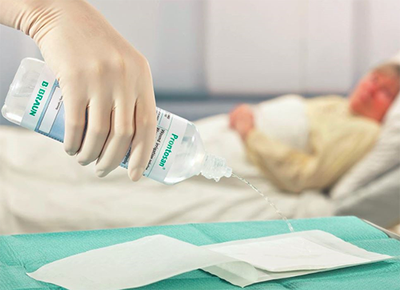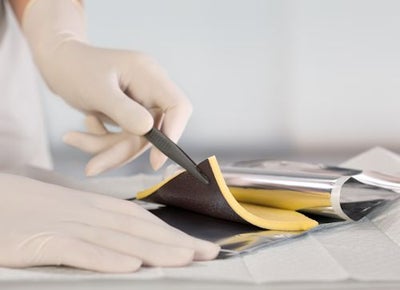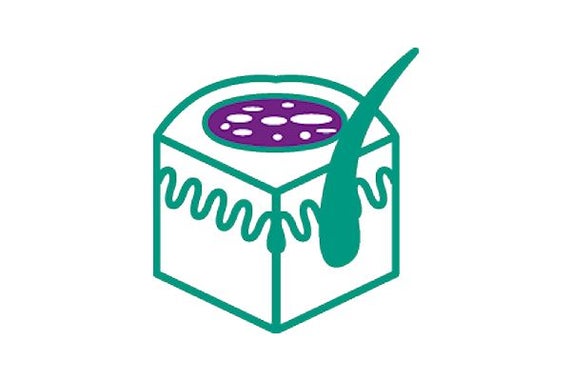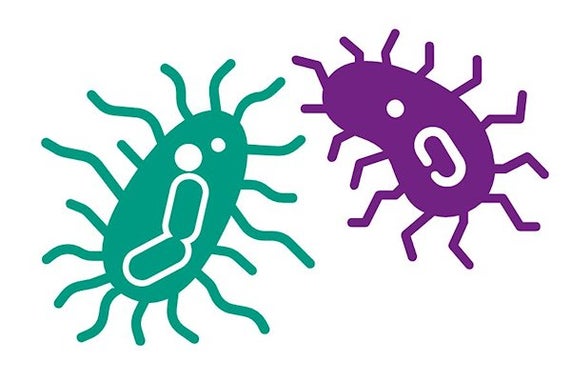Control and act
Acute and chronic wounds have a tendancy to get infected and compromise the normal healing pathway, leading to a greater burden on health systems, long term disabilities and an overall reduction of a patient’s quality of life.
Take wound bed preparation seriously with Prontosan® and combine it with Askina® Calgitrol® for a broad antimicrobial effectiveness.(1)
Reference:
1. Naude L. The use of Prontosan® in combination of Askina® Calgitrol®: an independent case series. Wounds International, 2018 ; 9(1): 44-48. Available at http://www.woundsinternational.com (accessed 16.03.2018).
Prontosan® - Only a clean wound can heal
Wound infections are caused by the deposit and profileration of microorganisms in the surgical site of a susceptible host. There are numerous ways microorganisms can enter the wound bed. The infection can result in sepsis when bacteria spreads into the blood stream. If not actively treated, a sepsis can progress to multi-organ failures with a potentially lethal outcome.
The main objective is to prevent infections rather than to treat them.
Askina® Calgitrol® - Broad antimicrobial effectiveness(2)
The treatment of local infection is essential for the healing process. Silver Alginates react immediately and are highly efficient against a wide range of microorganisms. Our unique silver dressings play an important role in reducing the bacterial load.
Due to its specific and patented ionic silver alginate matrix, Askina® Calgitrol® provides a broad antimicrobial effectiveness.(2) In contact with wound exudate, the alginate matrix forms a soft gel allowing a sustained controlled release to the wound bed during use of the dressing. (3)
Using the same technology with different presentation, Askina® Calgitrol® range is well adapted to the different wound types.
References:
2. Instruction for use: Askina® Calgitrol® Ag, Askina® Calgitrol® THIN, Askina® Calgitrol® Paste.
3. Opasanon S, Magnette A, Meuleniere F, Harding K. Askina® Calgitrol® Made Easy. Wounds International 2012; 3(1). Available from www.woundsinternational.com
Did you know?
Biofilm
60% of chronic wounds contain biofilm with a role in wound infection(4).
Reference:
4. T. Swanson et al: International Wound Infection Institute (IWII) Wound infection in clinical practice. Wounds International 2016
Infection
50% of chronic wounds are estimated to be infected(5).
Reference:
5. C. Dowsett: Adopting the two-week challenge in practice: making the case for silver dressings, Wounds UK, Vol. 10, N°2, 2014
Surgical site infections
38% of infections are in surgical patients. SSI are considered the most frequent complication in surgical patients(6).
Reference:
6. European Center for Disease Prevention and Control, Surveillance of surgical site infections in European hospitals –HAISSI protocol, version 1.02, 2012
Best practice videos in preventing and managing infection
These product & practice videos aim to update clinicians on best practices and explain how products can be used as preventing and managing infection in wound care can often be challenging. The series of videos was produced by Wounds International with the support of B. Braun.
Case study 1: Using Prontosan® Wound Irrigation Solution and Gel X on a patient with recurrent venous leg ulceration.
72-year-old woman with a seven-year history of recurrent venous ulcerations. Her current ulcer has been present for 14 months. She has a history of recurrent local and systemic infections. She has osteoarthritis, which gives her back and knee pain. She is taking anti-inflammatory medication regularly for the pain.
Case study 2: The use of Calgitrol® Ag on a patient with recurrent venous ulceration
74-year- old woman with a five-year history of venous ulceration. Her current ulcer has been present for 16 months.
She has osteoarthritis, hypertension and was recently diagnosed with Parkinson's disease, which has left her with a slight tremor. She is taking propranolol 40mg, dihydrocodeine 30mg and bendroflumethazide 2-5mg. She is allergic to adhesive dressings.
Creating a clean environment for dressing changes
This video will give viewers a step-by-step guide preparing a clean environment prior to changing a dressing, using B. Braun products.
How to apply Prontosan®
This video will show the correct technique for using Prontosan® (solution and gel) to cleanse a wound.
Expert opinions on infection management
Interview 1:
Using Prontosan® Wound Irrigation Solution and Gel X on patients with recurrent venous leg ulceration
Interview 2:
Using Calgitrol® Ag on patients with recurrent venous ulceration











